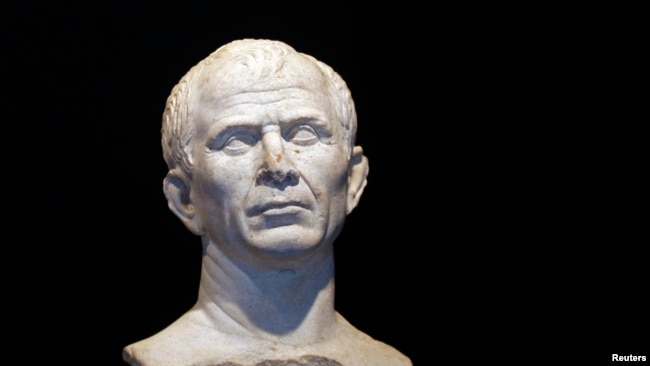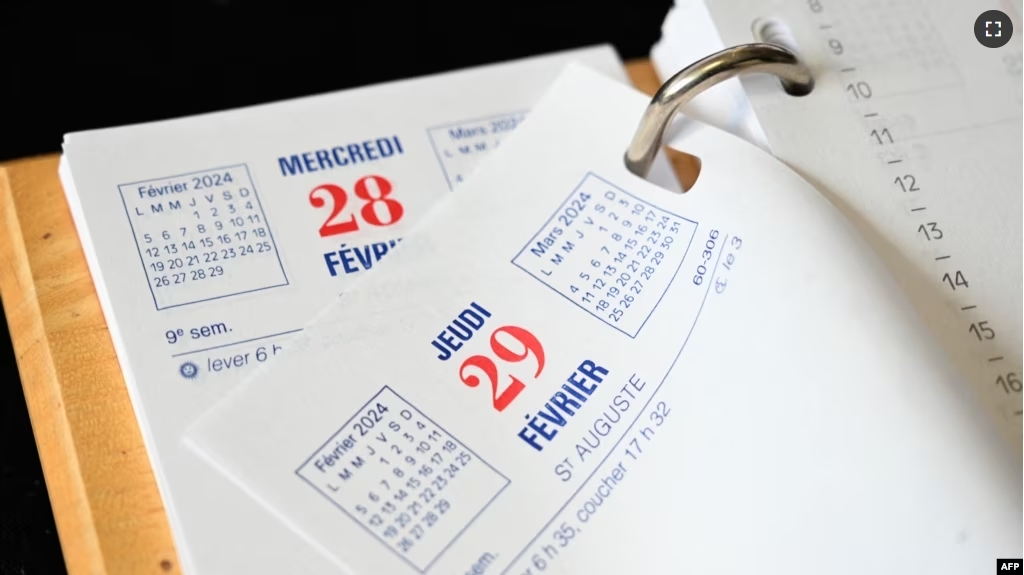This year, 2024, is a leap year. February 29 is known as “leap day.” But what is behind this rare extra day on the calendar?
Everyone knows the Earth takes 365 days to travel around the sun. Well, that is not exactly correct. The Earth really takes 365 days, five hours, forty-eight minutes and forty-six seconds to complete its orbit around the sun.
So, almost every four years an extra day occurs and it is represented on the calendar.
The Jet Propulsion Laboratory at the California Institute of Technology says the extra day is used to be sure the months stay connected to yearly events such as equinoxes and solstices.
NASA says that over time, our seasons would fall out of order without the leap day. Each calendar year is about six hours longer than 365 days.
However, a leap day is not added every four years. That would lengthen the calendar by 44 minutes, say experts at the National Air and Space Museum in Washington, D.C. Over time, that would mean summer would arrive in November, said Younas Khan, a physics instructor at the University of Alabama, Birmingham.
So a leap day is added nearly every four years, but not in years including 1700, 1800 and 1900. There was a leap day in 2000 because it was a year divisible by both 100 and 400. Over the next 500 years, there will be no leap day in 2100, 2200, 2300 and 2500.
There will be leap days in 2028, 2032 and 2036.
Without a leap day, farmers might have trouble planting in the correct season, Khan said. “Christmas would be in summer. There will be no snow. There will be no feeling of Christmas,” he said.
You might wonder who came up with the idea of leap day. Experts say the calendar change developed over time.

Ancient civilizations planned their years based on either the moon or the sun. By the time Julius Caesar controlled the Roman Empire, things had gotten more complicated. People had written down the calendars but seasons were “drifting.” For example, the weather in July was not always the same. So in that time, they added months to the calendar. But that did not really fix the problem.
The Romans fixed the problem in the year 46 BCE. The year became 365-and-one-fourth days long. So an extra day was added every four years. The Romans came close, but a year is actually 365 plus 0.242 days, says Nick Eakes, an astronomy professor at the University of North Carolina in Chapel Hill.
There have been multiple calendars used by western societies. The Athenian and the Julian calendars were used thousands of years ago. The Athenian calendar, however, ran into problems when holidays were not falling in the correct seasons, said Thomas Palaima, a classics professor at the University of Texas at Austin.
Over time, the current calendar also changed because of holidays. The leader of the Roman Catholic Church, Gregory XIII, fixed the calendar again in the late 1500s. He wanted to be sure the Christian holiday of Easter happened in early spring. So Gregory and his advisors did the difficult math to come up with something very close to the calendar we use today.
“If the solar year was a perfect 365.25 then we wouldn’t have to worry about the tricky math involved,” said Eakes, the astronomy professor.

Special birthdays
After the calendar, the main concern for leap day centers on those born on that day, February 29. It only comes around once every four years (for the most part.)
It is a conversation starter for many. It can be an administrative headache – some people must fill out official documents and say their birthday is either February 28 or March 1. Some computer systems have not yet been updated to include February 29 as a choice.
Only about 5 million of the 8 billion people worldwide were born on February 29. Shelly Dean of Seattle, Washington is one of them. Growing up, she said, she had normal birthday parties each year, but every fourth year, she had a special party.
She is now 23, but has not had too many “special” birthdays. So this year, she is planning one. She missed celebrating with her family four years ago, because she was attending school in New York. So on Thursday, she gets to celebrate her special day for the first time in eight years with her family.
“It’s a very big day,” she said.
I’m Dan Friedell.
Dan Friedell adapted this story for Learning English based on a report by the Associated Press.
________________________________________________
Words in This Story
calendar –n. a document, chart, etc., that shows the days, weeks, and months of a year
equinox –n. a day in the year where there is an equal amount of sunlight and darkness
solstice –n. the longest day of the year
classics –n. a study area that includes material that has been looked at for hundreds of years
drift –v. to move slowly but not with a clear direction
